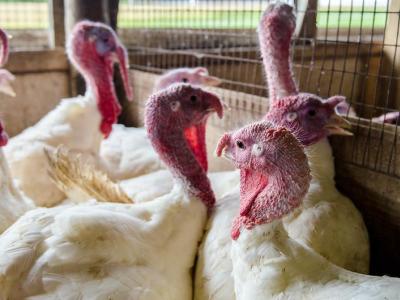Feb 10, 2006 (CIDRAP News) – An analysis of influenza viruses collected from thousands of wild and domestic birds in China and Hong Kong suggests that H5N1 viruses have been circulating in southern China for nearly a decade and have spread repeatedly from there to spark outbreaks across Asia.
The study by 27 researchers from China, Indonesia, Malaysia, Vietnam, and the United States provides strong evidence that migratory birds can spread the virus for long distances, a contention that has been controversial in recent months. The report was published online today by the Proceedings of the National Academy of Sciences.
Perhaps more surprising is the group's discovery of H5N1 viruses in some apparently healthy chickens in live-bird markets in southern China. Ducks are known to be capable of carrying the virus without appearing sick, but the virus has been regarded as almost invariably pathogenic or lethal for chickens.
"We have shown that H5N1 virus has persisted in its birthplace, southern China, for almost 10 years and has been repeatedly introduced into neighboring (e.g., Vietnam) and distant (e.g., Indonesia) regions, establishing 'colonies' of H5N1 virus throughout Asia that directly exacerbate the pandemic threat," says the report, written by a team that included leading flu expert Robert G. Webster, PhD, of St. Jude Children's Research Institute in Memphis.
The scientists took more than 13,000 samples from migratory birds in Hong Kong's Mai Po Marshes and at Poyang Lake in southeastern China over three winters from 2002 to 2005. Among these they found six H5N1 viruses, all collected from apparently healthy migratory ducks at Poyang Lake just before their migration north.
The team also tested samples gathered from more than 51,000 apparently healthy birds in live-poultry markets in southern China from January 2004 through June 2005. Testing detected 512 H5N1 viruses, including isolates from 58 of the 22,390 chickens tested, with most of the rest found in ducks.
The analysis also included viruses recovered from the outbreak in migratory birds at Qinghai Lake in north-central China in 2005, along with isolates collected from poultry in Indonesia, Vietnam, and Malaysia in the past 2 years.
To trace the relationships among H5N1 samples, the researchers sequenced the genomes of 69 viruses recovered in China since January 2004 and 59 isolates gathered in Indonesia, Vietnam, and Malaysia from August 2003 through May 2005. This enabled them to construct a phylogenetic chart, or family tree, of the viruses.
Among other things, the analysis revealed that the hemagglutinin protein of all the viruses stemmed from the patriarch of highly pathogenic H5N1 viruses, a strain found in geese in China's Guangdong province in 1996. It also showed that viruses from particular regions formed "distinct sublineages," which, the authors say, demonstrates the long-term persistence of the viruses in those regions.
Parts of southern China represented an exception to this picture of regional "sublineages," in that the strains there were more diverse, falling into four different genotypes, the report says. "Because the precursor of these H5N1 viruses . . . was originally detected in southern China in 1996 and because H5N1 viruses in this region have the greatest genetic diversity, southern China is the most likely source of the emergent and reemergent HPAI [highly pathogenic] H5N1 influenza viruses," it states.
The phylogenetic analysis also showed that one May 2005 virus from Vietnam was much more closely related to a January 2005 Chinese strain than to other strains from Vietnam, indicating that the virus probably had been recently introduced to Vietnam from China via poultry. In fact, the authors say their findings suggest that H5N1 strains spread from southern China to Vietnam three times—in 2001, 2003, and 2005.
"Therefore, control of this regional epizootic and its attendant pandemic threat requires that the source of virus in southern China be contained," they assert.
The researchers found that viruses from the Qinghai Lake outbreak matched up with those from migratory ducks at Poyang Lake, more than 1,000 miles away, which "strongly argues that migrating birds can transfer the virus over long distances." The team found further support for this notion when they exposed a number of ducks and geese to H5N1 viruses and found that most of the ducks survived; the surviving ducks shed the virus for as long as 7 days after infection.
The report says only six of the isolates that were sequenced had a mutation in the M2 protein that confers resistance to the older antiviral drug amantadine; the rest all had structures indicating sensitivity to the drug. US officials recently recommended against using amantadine and rimantadine to treat flu patients this winter because most of the circulating viruses had become resistant to them. Also, previous evidence of H5N1 resistance to the two drugs has led to a general assumption that they would be of little use if that virus evolves into a pandemic strain.
The authors say the diversity they found among H5N1 samples "challenges the wisdom" of relying on just one strain to make a candidate vaccine for pandemic preparedness. The strains used to develop human vaccines "must reflect the antigenic diversity observed across this wider region," they write.
Chen H, Smith GJD, Li KS, et al. Establishment of multiple sublineages of H5N1 influenza virus in Asia: implications for pandemic control. Proc Natl Acad Sci 2006 Feb 10 (early online publication) [Abstract]


















